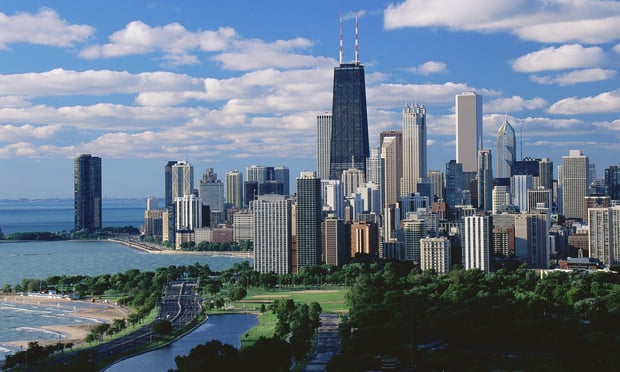Once again, the industrial sector seems to be the biggest beneficiary of the pandemic.
While e-commerce companies in general have experienced increase demand and consumer traffic since the start of the pandemic, food and beverage products top the list of online sales, according to data from JLL. Grocery delivery service Instacart, for example, had a 500% increase in customer volume in May, and Ryder System Inc. has expanded its real estate footprint to accommodate new demand for consumer-packaged goods and food and beverage.
Overall, food-and-beverage online sales have increased 84.9% year-over-year. Household care sales, the category with the second largest increase, are up 65.2% year-over-year, and Pet care sales increased 45.6%. Food-and-beverage are by far the leader in online shopping growth for the year.
Recommended For You
For the real estate market, the increased grocery delivery sales will drive demand for cold storage, fulfillment spaces and freight and third-party logistics companies. More specifically, grocery delivery companies are looking for facilities that are close to major population centers to meet shallow delivery timelines.
In the interim to locating sufficient spaces in markets where demand is surging, grocery delivery companies are restructuring their supply chain, turning some brick-and-mortar stores into dark online-only shopping centers or partnering with existing brick-and-mortar stores to get fulfill orders.
Already, US cold storage was in short supply. Nationally, the industrial segment has a historically low vacancy of 10%. Adding more supply isn't as easy as development warehouse space. This is a specialty asset, and it costs twice as much as warehouse space to develop. A cold storage or freezer facility costs $130 to $180 per square foot to develop, while a traditional warehouse space only costs $70 to $90 per square foot to develop. These costs are the highest in the Western Region and Northeast Region, where there are more dense population centers. Southwest cold storage construction, on the other hand, is the most affordable in the country.
Generally, cold storage users want new construction assets rather than warehouse-conversion projects. Temperature-controlled properties require pallet capacity, which maximizes vertical racking. To convert an existing warehouse into a cold storage space, there is a loss of ceiling height that limits vertical racking, making these properties less efficient. With more demand for fresh produce and organic ingredients, grocery delivery services and need efficient spaces with the capacity to serve large population centers.
While speculative construction was challenging in the past, the increased demand for these spaces has made cold storage a possibility. Currently, more than 78% of the current cold storage stock was built before 2000, and much of it is considered obsolete or inefficient. Today, cold storage tenants need 40-to-50-foot ceiling heights and maximum space for stacking and racking products. These features generally come with new development properties.
© Touchpoint Markets, All Rights Reserved. Request academic re-use from www.copyright.com. All other uses, submit a request to [email protected]. For more inforrmation visit Asset & Logo Licensing.






